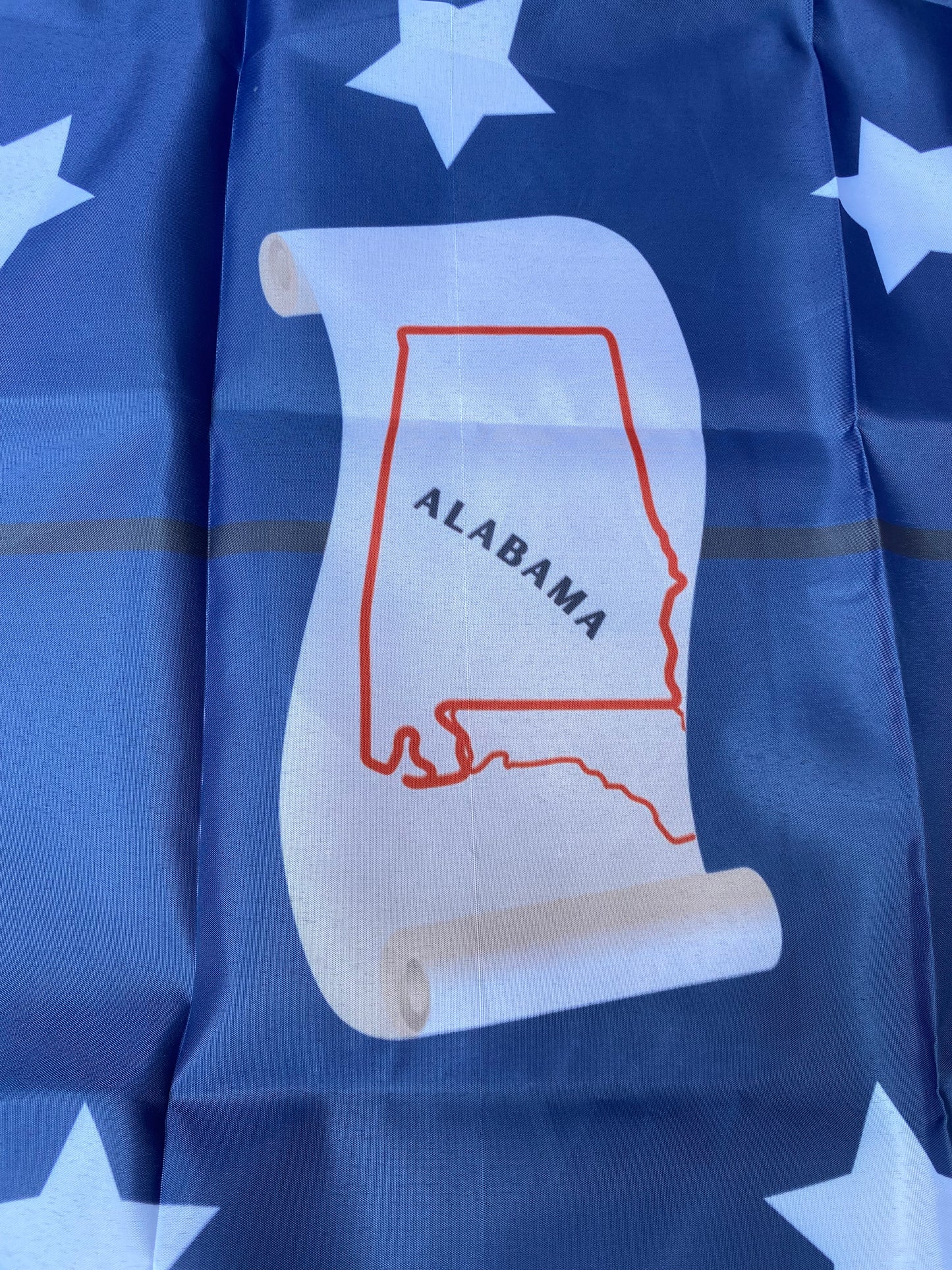Beauregard's Tailor
1st Alabama Island Number 10 House Flag
1st Alabama Island Number 10 House Flag
Couldn't load pickup availability
These are modern all-weather nylon flags for your house or garden based on the original flag carried by the 1st Alabama Infantry.
These flags are made to order and take about 3 weeks to produce and ship.
The original flag and details can be found here.
The flag of the 1st Alabama Infantry was made in Montgomery, Alabama, sometime after March 4, 1861. The flag is identical to the original Confederate national flag raised on that date except that it has a map of Alabama in the center of the circle of seven stars. The fact that there are seven stars indicates that the flag was made before the firing on Ft. Sumter on April 12, 1861. Following the bombardment and surrender of Ft. Sumter, four additional states seceded and the Confederate flag subsequently had eleven stars. This flag was presented to the regiment at Ft. Barrancas near Pensacola, Florida, in the spring or summer of 1861. In his history of the 1st Alabama Infantry, Edward Young McMorries noted that the flag was sent by "the ladies of Montgomery." The map, within the circle of stars, on the canton of the flag, shows the route of the regiment from Montgomery to Pensacola and the white center bar includes the inscription "1st Regiment 12m Volunteers." Both the map and inscription were painted at the time the flag was manufactured. Following the bombardment of Ft. Pickens on nearby Santa Rosa Island, the regiment was allowed to add the battle honor "November 22nd and 23rd, 1861" to commemorate their service in the battle. In a broadside dated December 18, 1861 Governor John Gill Shorter praised the service of the 1st Alabama Infantry and made particular mention of the flag: "See the glorious banner, immortalized by the inscription, 22nd and 23rd November 1861 as it streams out upon the breeze." The flag was carried by the regiment until they were surrendered at Island Number 10, near New Madrid, Missouri, on April 8, 1862. Following the surrender, the flag was kept as a souvenir by Brigadier General Eleazer Authur Paine. The flag eventually passed to Paine's son Phelps, who settled in Omaha, Nebraska. Phelps was very active in the Grand Army of the Republic (Union veterans of the Civil War) and the flag was apparently displayed at their headquarters. When he died in 1919, the flag remained with the local GAR camp. In 1949, the GAR collections were transferred to the Nebraska Historical Society. The flag remained there, unidentified, until May 2006 when James Hanson, former director of the Nebraska Historical Society, notified Howard Madaus of its existence. Madaus, the nation's foremost expert on Civil War flags determined that the flag was that of an Alabama regiment. On June 1, 2006, Madaus contacted Curator Robert Bradley at the Alabama Department of Archives and History who verified that it was the flag of the 1st Alabama Infantry presented at Ft. Barrancas in 1861. Bradley then contacted Deb Arenz, senior curator at the Nebraska Historical Society, who later proposed that the flag be deaccessioned and returned to Alabama. On May 23, 2007, in a ceremony near the U.S. Capitol, the flag was returned to the state of Alabama in an official ceremony. On hand to receive the flag were Director Edwin C. Bridges and Chief Curator Robert Bradley of the Alabama Department of Archives and History. The flag was presented by Chief Executive Officer Mike Smith and Senior Curator Deb Arenz of the Nebraska Historical Society. Participating in the ceremony were Alabama Representatives Terry Everett and Robert Aderholt and Nebraska Representatives Jeff Fortenberry and Lee Terry.
Shipping Timelines
Shipping Timelines
These flags are made to order and take about 4 weeks to produce and ship.












